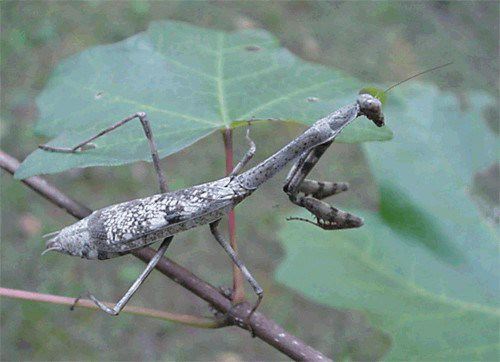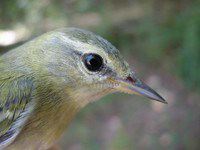|
|
|||
|
THIS WEEK at HILTON POND Installment #39---Visitor # (Back to Preceding Week; on to Next Week) |
|
CAROLINA MANTID: Insects are amazing, but one of the most fascinating of all six-leggers at Hilton Pond Center is the Praying Mantis. This elongated creature is the Tyrannosaurus rex of the insect world, stalking the goldenrod patch in fall and grabbing anything that moves with its unique front legs. It is the forelegs that give the Praying Mantis its name, for their owner holds them like folded hands until a passing insect comes close enough to grasp. The first two segments of the forelegs are lined with sharp, overlapping spines that can pierce an insect exoskeleton and provide an escape-proof grip as the mantid chows down on its still-struggling prey. 
All text & photos © Hilton Pond Center The most common mantid at Hilton Pond Center is the Carolina Mantid, Stagmomantis carolina, which happens to be South Carolina's official state insect (photo above). This native species is 2-4" long and much smaller than the eight-inch Chinese Mantid (Tenodera aridifolia sinensis), an introduced species that sometimes appears in the Piedmont. Carolina Mantids vary greatly in color. Some are pale solid green while others are brownish-tan or gray--with or without dark spots and speckles that provide camouflage. Females are somewhat heavier-bodied and tend to lie in wait for their prey, while the males are more active stalkers. Although smaller insects are their principal diet, they have been known to capture prey as large as Ruby-throated Hummingbirds (Archilochus colubris).
After several warm days in late March or early April, the eggs hatch and about 50 or so ant-sized nymphal mantids emerge, sometimes getting a jump on life by cannibalizing each other. Through a series of molts, the nymphs get progressively larger through the spring and summer, and by October they've developed enough to mate and produce yet another generation of Carolina Mantids. All text & photos © Hilton Pond Center POSTSCRIPT: The egg case pictured above actually hatched out in May 2001. See It's A Boy! And A Girl! And A Boy, And A Girl, And A Boy, And . . . . Comments or questions about this week's installment? NOTE: Be sure to scroll down for an account of all birds banded or recaptured during the week, as well as some other interesting nature notes. "This Week at Hilton Pond" is written & photographed You may wish to consult our Index of all nature topics covered since February 2000. You can also use the on-line Search Engine at the bottom of this page. For a free, non-fattening, on-line subscription to "This Week at Hilton Pond," just send us an E-mail with Subscribe in the subject line. Please be sure to configure your spam filter to accept E-mails from hiltonpond.org. |

 In fall, mantids mate and the female sometimes rewards the male for his services by biting off his head and eating most of him. This is really no big deal, since the male wouldn't make it through the winter anyway, and his protein contributes to helping the female produce healthier eggs. When the fertilized eggs are mature, the female produces a frothy substance from the tip of her abdomen and intersperses them throughout. The mass hardens into a Styofoam-like egg case, or ootheca.
In fall, mantids mate and the female sometimes rewards the male for his services by biting off his head and eating most of him. This is really no big deal, since the male wouldn't make it through the winter anyway, and his protein contributes to helping the female produce healthier eggs. When the fertilized eggs are mature, the female produces a frothy substance from the tip of her abdomen and intersperses them throughout. The mass hardens into a Styofoam-like egg case, or ootheca.




